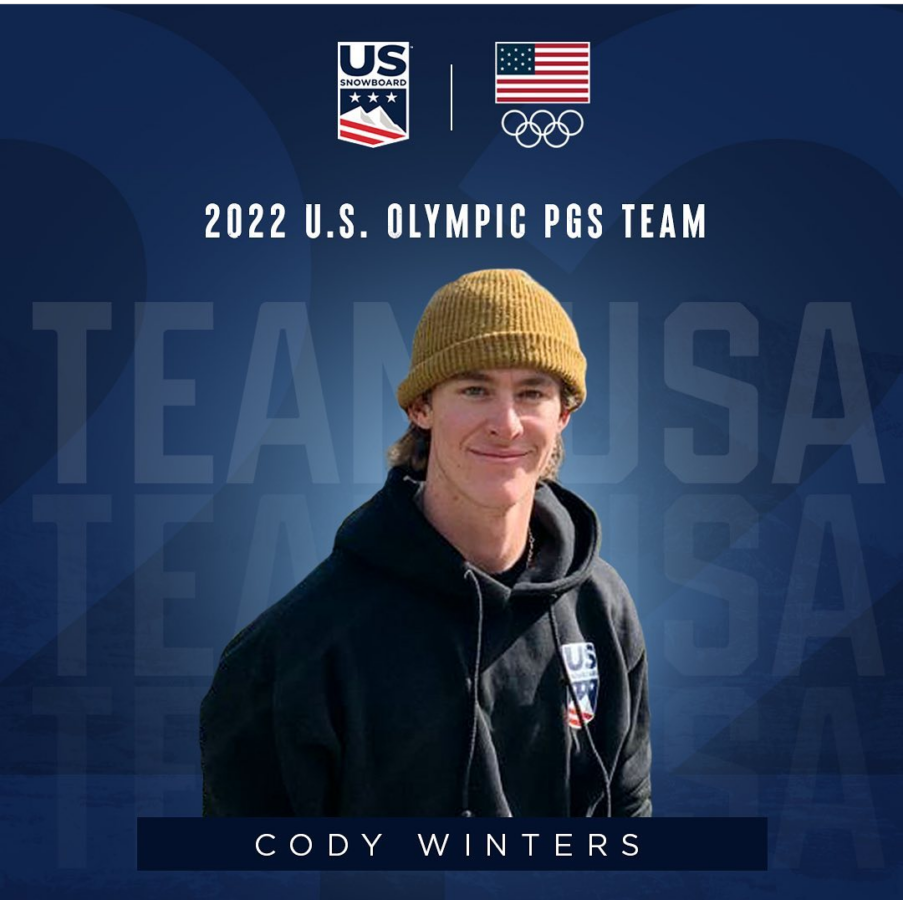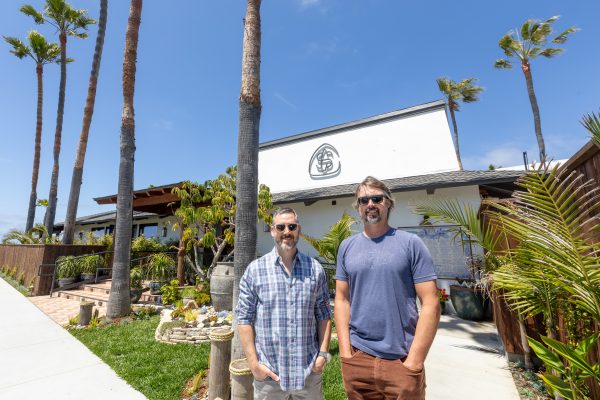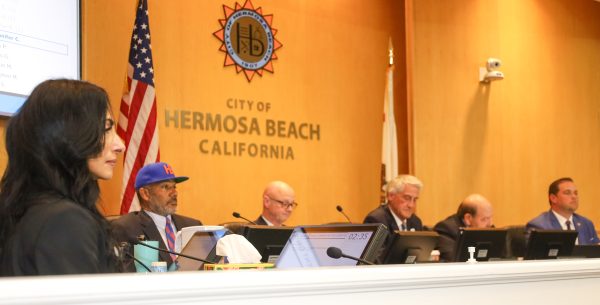no images were found
by Mike WaldnerThis is a tale that runs from surf to snow, from Hermosa Beach and Manhattan Beach to Steamboat Springs to Beijing.
It also is a tale of an underdog.
Check out Hermosa Beach native Cody Winters, 21, in the men’s parallel giant slalom in the Winter Olympics.
He races Tuesday, February 8 in the morning in China, which will be in the evening on the 7th here.
Winters, who now lives in Steamboat Springs, a town of about 14,400 in Colorado, raised nearly $40,000 for his campaign on the World Cup tour in Europe. That led to a spot on the U.S. Olympic Alpine snowboarding team, beating out competitors supported by national federations.
“I’ve achieved it,” he said in a video sent by Dave Winters, his father. “I’m going. It’s pretty sick.”
Dave. He grew up in Hermosa Beach and attended Mira Costa High in Manhattan Beach.
“We surfed all over the place,” he said, speaking by phone from Steamboat Springs.”We’d go to Mexico and Hawaii. Longfellow was my home break. Our house was on 26th. But 26th did not have as good a break as Longfellow.”
Dave played football for Coach Bill Cooper at Mira Costa as an undersized backup cornerback on the 1970 Bay League championship team.
“I was 5-9 and about 135,” he said. “I had big feet and the doctor said I would grow into my feet. I’d ask, ‘When?’ Eventually, I grew to 6-feet and 190.”
Dave attended El Camino College after high school, solely as a student. Football now was in his rear view mirror. He followed a girlfriend to Steamboat Springs in 1974.
“At that time, there was no snowboarding,” he said. “Just skiing.”
So he hit the slopes. There also was time for backcountry skiing.
“Then I did snowboarding when it was allowed,” he said. “They called it going to the dark side. I went to the dark side and never looked back.”
The attraction of snowboarding sprang from Dave’s childhood love.
“It was so much like surfing,” he said. “Even though I was a very good skier at that time, once I picked up snowboarding I never went back.”
He still finds time, at the age of 68, to snowboard 30 to 50 days a year, while also running Winters Woodworking. (
You can check out his custom-made cutting boards, centerpieces, jewelry and more at winterswoodworker.com.)
Cody also is a businessman. After working for a window washing company in Steamboat Springs, he decided, at the age of 18, to become his own boss.
“He learned the business and then he started his own gig,” Dave said of Winters Window Washing. “He’s been very successful. When it’s really cracking during the summer, he’ll have four other guys working with him.”
Dave required Cody to learn to ski before allowing him to take up snowboarding. The message from father to son: “Once you can come down the black diamond run you can get on a snowboard.”
“That was the best thing,” Dave said. “It’s easier to learn to ski.”
Cody was all of 4 at the time.
Ski slopes are graded green, blue, and black, black being the most difficult.
A year later, Cody followed older brother Billy on a snowboard.
“Cody started so young he cannot remember when he was not snowboarding,” he said.
Sibling rivalry, in a good way, spurred baby brother.
“Billy is very good in his own right,” Dave said.
“I think it really helps an athlete to have an older brother to chase,” Dave said.
Cody’s underdog status is evident in the fact that he needed a Go Fund Me page to pay his way on the World Cup Tour, and also in the experience level of the competition.
His costs include a coach, lodging, lift tickets, boots, boards, bindings, clothing, wax, and travel via car, train or plane. The competition adds doctors, physical therapists, board techs, multiple coaches and people to manage their schedules when budgeting for a season. Plus they have comfortable lodging.
Cody spends much of his time on the tour living in a B&B in Ramsau am Dachstein, Austria owned by Richard Pickl, his coach.
“He gives him a pretty good deal,” Dave said.
Another good deal came his way when Canadian snowboarder Arnaud Gaudet and his father-coach Patrik invited Cody to join them for a couple of weeks in the van they use for transportation and sleep. While far from luxury living, it was expedient.
So how do you explain parallel giant slalom snowboarding to someone steeped in baseball, football and basketball?
“It’s just like a ski race,” Dave said. “Only it’s on a snowboard.”
The racers navigate their way through a series of gates as they hurtle down a mountain, often in weather more suited for going inside and having something hot to drink.
“There are 30 gates, give or take,” Dave said. “Every race is a little bit different. Some are steeper than others. Some are longer. Some have a big turn. There are a lot of factors.”
It all happens in about 30 seconds.”
Another factor expands on the underdog storyline.
“Cody is much better in slalom (which is a shorter distance) than giant slalom,” Dave said. “Unfortunately, they do not have slalom in the Olympics.”
While providing a snowboarding mini-primer, Dave turned to boots.
“There are soft boots and hard boots,” he said.
Hard boots are made of hard plastic. Soft boots are more pliable.
“You start with soft boots,” Dave said. “Most of the snowboarders you see on the mountain are in soft boots. Hard boots are for racing.”
Technique and decision making, split-second-by-split-second, are critical when it comes to controlling a board.
“If you want to go faster, you go straighter,” Dave said.”If you want to slow down you go rounder around the gate. You use your feet to control the board by tipping it up with your toes or heels.”
Searching for an example, he went back to his surfing roots.
“It’s like either goofy foot or regular foot,” he said.
Cody’s Olympic team bio mentions concussions.
Under injuries is the report, “I have had countless concussions growing up at a young age sending it way too hard on a snowboard.”
Dave explained: “Growing up with soft boots, he did freestyle, slopestyle and halfpipe, and both involve jumping. You would not believe how high the kids go. They’re doing it on man-made snow that is as hard as concrete.
“It wasn’t until just a few years ago that he confided in me that he had quite a few concussions he did not tell me about. I worry about that because of what we have read about athletes after their careers. But that was freestyle, not racing.”
There has been noise about the snow in China. It will be 100 percent man made, according to Sports Illustrated, requiring 49 million gallons of water. Maddie Mastro, a halfpipe competitor, told the magazine artificial snow is sticky and “doesn’t glide the way natural snow glides.”
Dave does not see this as a problem for Cody.
“Most slopes now are artificial snow,” he said. “So this will not bother him a bit.”
Cody is not working with Pickl in China. Instead, his coach is Thedo Remmelink, a snowboard Olympian in 1998 in Nagano Japan for the Dutch team.
“He’s a fantastic world-renowned coach who lives and coaches here in Steamboat,” Dave said. “People come from all over the world to work with him. I was his assistant for six years. He has been Cody’s lifelong coach.”
Much has been written and said about the potential for athletes running afoul of totalitarian Chinese authorities. The U.S. Olympic Committee did not have its head in the sand in this area. Word of, among other things, China’s human rights abuses, have become a major topic.
“He had to take on-line classes,” Dave said. “You answer questions at the end and prove you took the test. They told them all sorts of things, what to say, what not to say, what not to text.”
The athletes were given cell phones to use during the Games, no doubt to prevent hacking of private information on their own phones.
As for COVID-19 concerns, Dave said, “There was a whole series of testing before they went there. They were tested before they got on the plane (in the snowboarders’ case that was in Zurich, Switzerland) and right after they got off the plane.They are heavy on masks.”
When not training or competing, the athletes have some but not total freedom to become spectators.
“They can go see outdoor events,” Dave said. “They cannot go to hockey or skating.”
Speaking as a coach, not his father, what are Cody’s chances of medaling?
“Not very good,” Dave admitted. “If it was slalom, it would be a different story. His best finish in the giant slalom is 25th and there are 32 competitors. His sport favors experience and age. Cody is 21. There is a man 36 (reigning world champion Benji Karl, Austria) and a woman 48 (Claudia Riegler, Austria) competing in the World Cup events.”
But?
“On any given day anything can happen,” he said.
What happened was it took a 1:22.48 combined total of two runs on Monday (California time) in the qualification round to make the cut. Cody was five ticks away at 1:27.80.
Based on his view before arriving in China, he was disappointed but far from disheartened.
“The focus is to gain Olympic experience,” Cody had said in a video Dave sent several days earlier. “I don’t see this being my last Olympics. Just keep chasing fun and happiness and passion wherever it lies.”
Dad was pumped watching on Peacock in Steamboat Springs with about 75 of his closest friends.
“I’m really proud of him,” Dave said. “This is the start of his journey and his career.” ER











